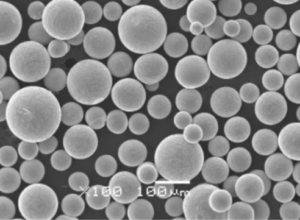Lorsque vous pensez à la protection, à l'amélioration ou même à la modification des propriétés de la surface d'un objet, qu'est-ce qui vous vient à l'esprit ? Matériaux de revêtement de surfaceBien sûr ! Ces revêtements jouent un rôle crucial dans une myriade d'industries, offrant tout, de la résistance à la corrosion à l'attrait esthétique. Dans ce guide détaillé, nous allons démêler les complexités des matériaux de revêtement de surface, en décomposant leurs types, leurs compositions, leurs propriétés, leurs applications et bien plus encore. Alors, c'est parti !
Vue d'ensemble des matériaux de revêtement de surface
Les matériaux de revêtement de surface sont des substances appliquées à la surface d'un objet, appelé substrat, afin d'en améliorer les propriétés. Ces améliorations peuvent porter sur l'apparence, la résistance à la corrosion, la résistance à l'usure, etc. Les matériaux utilisés pour les revêtements de surface peuvent aller de la simple peinture aux revêtements complexes à base de polymères et aux poudres métalliques avancées.
Les revêtements de surface sont essentiels dans des secteurs tels que l'automobile, l'aérospatiale, la construction et l'électronique. Non seulement ils protègent les surfaces, mais ils peuvent également réduire les frottements, améliorer la conductivité et assurer l'isolation. En fait, ils sont les héros méconnus qui assurent la longévité et la fonctionnalité de divers produits.
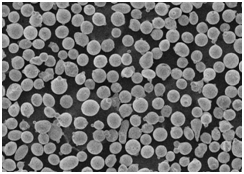
Types de matériaux de revêtement de surface
Pour mieux comprendre les matériaux de revêtement de surface, décomposons-les en leurs principaux types :
| Type | Composition | Propriétés | Applications |
|---|---|---|---|
| Peintures | Pigments, liants, solvants | Esthétique, protection | Automobile, construction, articles ménagers |
| Vernis | Résines, solvants | Finition brillante, protection | Produits en bois, meubles |
| Revêtements en poudre | Polymères thermoplastiques ou thermodurcissables | Durabilité, respect de l'environnement | Appareils électroménagers, pièces automobiles |
| poudres métalliques | Métaux comme l'aluminium, le zinc, le cuivre | Haute résistance, conductivité | Électronique, aérospatiale, machines industrielles |
| Revêtements polymères | Polymères tels que PTFE, PEEK | Résistance chimique, faible frottement | Dispositifs médicaux, pièces mécaniques |
| Revêtements céramiques | Silice, alumine, zircone | Résistance à la chaleur, dureté | Turbines, composants de moteurs |
| Placage | Métaux comme l'or, l'argent, le chrome | Résistance à la corrosion, esthétique | Bijouterie, électronique, automobile |
Modèles spécifiques de poudre métallique
Les poudres métalliques constituent un segment essentiel des matériaux de revêtement de surface, offrant des propriétés uniques qui les rendent indispensables dans diverses applications de haute technologie. Voici quelques modèles de poudres métalliques spécifiques :
- Poudre d'aluminium (série Al-1000)
- Description: Poudre d'aluminium de haute pureté connue pour son excellente conductivité et sa résistance à la corrosion.
- Applications: Utilisé dans l'électronique, les composants aérospatiaux et comme pigment dans les revêtements.
- Poudre de zinc (série Zn-9000)
- Description: Poudre de zinc à haute résistance à la corrosion, souvent utilisée dans les processus de galvanisation.
- Applications: Pièces automobiles, matériaux de construction et revêtements anticorrosion.
- Poudre de cuivre (série Cu-7000)
- Description: Poudre de cuivre à haute conductivité utilisée dans les applications électriques et thermiques.
- Applications: Cartes de circuits imprimés, composants électroniques, dissipateurs thermiques.
- Poudre de titane (série Ti-6000)
- Description: Poudre de titane connue pour son rapport poids/résistance élevé et sa biocompatibilité.
- Applications: Pièces pour l'aérospatiale, implants médicaux et équipements sportifs.
- Poudre de fer (série Fe-5000)
- Description: Poudre de fer polyvalente utilisée dans diverses applications industrielles en raison de ses propriétés magnétiques.
- Applications: Matériaux magnétiques, pièces automobiles et composants structurels.
- Poudre de nickel (série Ni-4000)
- Description: Poudre de nickel présentant une résistance élevée à l'oxydation et à la corrosion, utilisée dans des applications à haute température.
- Applications: Aubes de turbines, électrodes de batteries et équipements de traitement chimique.
- Poudre de chrome (série Cr-3000)
- Description: Poudre de chrome connue pour sa dureté et sa résistance à la corrosion.
- Applications: Revêtements durs, outils de coupe et surfaces résistantes à l'usure.
- Poudre d'argent (série Ag-2000)
- Description: La conductivité élevée et les propriétés antimicrobiennes font de la poudre d'argent un produit idéal pour les applications électroniques et médicales.
- Applications: Encres conductrices, dispositifs médicaux et électronique.
- Poudre d'or (série Au-1000)
- Description: Poudre d'or connue pour son excellente conductivité et sa résistance à la corrosion, souvent utilisée dans l'électronique haut de gamme.
- Applications: Connecteurs électroniques, articles de luxe et dispositifs médicaux.
- Poudre de tungstène (série W-8000)
- Description: Poudre de tungstène de densité et de point de fusion élevés, utilisée dans les applications à haute température.
- Applications: Composants aérospatiaux, contacts électriques et blindage contre les radiations.
Composition des Matériaux de revêtement de surface
Comprendre la composition des matériaux de revêtement de surface aide à sélectionner le bon type pour une application spécifique. Voici un aperçu détaillé :
| Matériau | Composition | Éléments clés |
|---|---|---|
| Peintures | Pigments, liants, solvants | Dioxyde de titane, résine acrylique, eau/solvant |
| Vernis | Résines, solvants | Résine alkyde, polyuréthane, essence minérale |
| Revêtements en poudre | Polymères (thermoplastiques/thermoset) | Polyester, époxy, polyuréthane |
| poudres métalliques | Métaux purs, alliages | Aluminium, zinc, cuivre, titane |
| Revêtements polymères | Polymères | PTFE, PEEK, Polyéthylène |
| Revêtements céramiques | Céramique | Silice, alumine, zircone |
| Placage | Métaux | Or, argent, chrome, nickel |

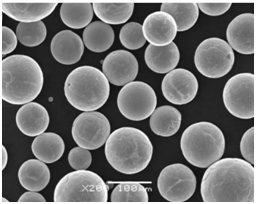
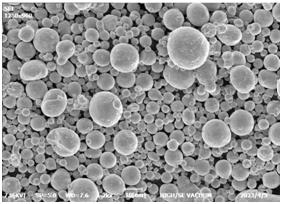
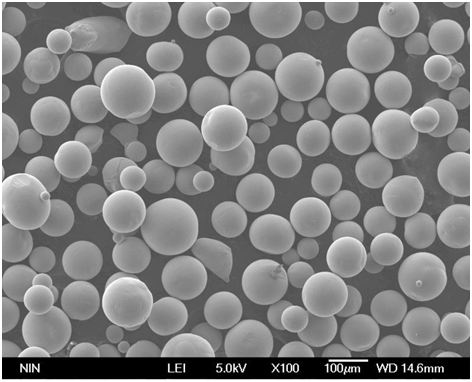
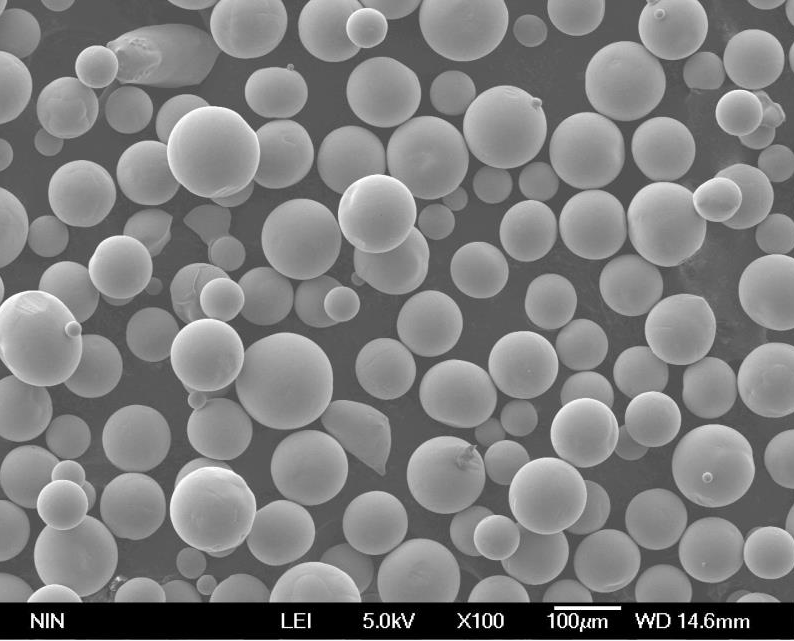
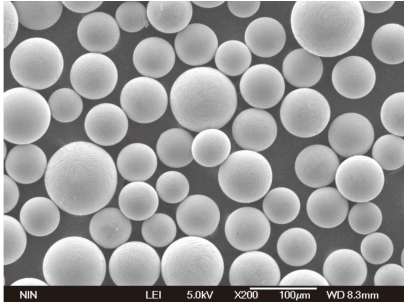
Caractéristiques des matériaux de revêtement de surface
Les différents matériaux de revêtement de surface présentent des caractéristiques uniques en fonction de leur composition et de l'usage auquel ils sont destinés. En voici un aperçu :
| Caractéristique | Peintures | Vernis | Revêtements en poudre | poudres métalliques | Revêtements polymères | Revêtements céramiques | Placage |
|---|---|---|---|---|---|---|---|
| Durabilité | Modéré | Haut | Très élevé | Haut | Haut | Très élevé | Haut |
| L'attrait esthétique | Haut | Haut | Haut | Modéré | Modéré | Faible | Haut |
| Résistance à la corrosion | Modéré | Modéré | Haut | Haut | Haut | Très élevé | Haut |
| Résistance à la chaleur | Faible | Faible | Modéré | Haut | Haut | Très élevé | Modéré |
| Résistance chimique | Modéré | Modéré | Haut | Modéré | Très élevé | Haut | Haut |
| Impact sur l'environnement | Modéré | Modéré | Faible | Modéré | Modéré | Faible | Modéré |
Applications des revêtements de surface
Les matériaux de revêtement de surface trouvent des applications dans différents domaines, grâce à leurs diverses propriétés. Examinons quelques applications courantes :
| application | Matériaux Used | Raison |
|---|---|---|
| Automobile | Peintures, revêtements en poudre, poudres métalliques | Esthétique, résistance à la corrosion, durabilité |
| Aérospatiale | Poudres métalliques, revêtements céramiques, placage | Haute résistance, résistance à la chaleur, résistance à l'usure |
| Électronique | Poudres métalliques, revêtements polymères, placage | Conductivité, protection, fiabilité |
| La construction | Peintures, peintures en poudre, vernis | Protection, esthétique, durabilité |
| Dispositifs médicaux | Revêtements polymères, poudres métalliques, placage | Biocompatibilité, résistance à la corrosion, stérilisable |
| Machines industrielles | Poudres métalliques, revêtements céramiques, revêtements polymères | Résistance à l'usure, durabilité, résistance à la chaleur |
Spécifications, tailles, qualités, normes
Lors de la sélection des matériaux de revêtement de surface, il est essentiel de tenir compte des spécifications, des dimensions, des qualités et des normes pour s'assurer qu'ils répondent aux exigences de l'application. En voici un aperçu :
| Matériau | Spécifications | Tailles | Notes | Normes |
|---|---|---|---|---|
| Peintures | ASTM D523 | Divers | Industriel, Décoratif | ISO 9001 |
| Vernis | ASTM D1640 | Divers | Brillant, semi-brillant | EN 927 |
| Revêtements en poudre | ASTM D3451 | Particules de taille micrométrique | Cure haute, cure basse | AAMA 2605 |
| poudres métalliques | ASTM B212 | De la taille du micron à celle du millimètre | Haute pureté, allié | ISO 3252 |
| Revêtements polymères | ASTM D6577 | Divers | Poids moléculaire élevé, faible | Approuvé par la FDA |
| Revêtements céramiques | ASTM C633 | Divers | Haute température, basse température | SAE AMS |
| Placage | ASTM B689 | Épaisseur en microns | Décoratif, fonctionnel | ISO 4527 |
Fournisseurs et détails des prix
Il est essentiel de savoir où s'approvisionner en matériaux de revêtement de surface et de connaître leurs prix pour planifier et établir un budget. Voici quelques fournisseurs importants et les détails de leurs prix :
| Matériau | Fournisseur | Prix (par kg) | Contact |
|---|---|---|---|
| Poudre d'aluminium | Sigma-Aldrich | $50 | www.sigmaaldrich.com |
| Poudre de zinc | Éléments américains | $30 | www.americanelements.com |
| Poudre de cuivre | Inframat Corporation | $70 | www.inframat.com |
| Poudre de titane | AP&C | $200 | www.advancedpowders.com |
| poudre de nickel | Vale | $100 | www.vale.com |
| poudre de fer | Hoganas AB | $25 | www.hoganas.com |
| Poudre de chrome | Hunter Chemical | $120 | www.hunterchem.com |
| Poudre d'argent | Ames Goldsmith | $900 | www.amesgoldsmith.com |
| Poudre d'or | Materion | $60,000 | www.materion.com |
| poudre de tungstène | Tungstène et poudres à l'échelle mondiale | $80 | www.globaltungsten.com |
Comparer les avantages et les inconvénients
Pour prendre une décision éclairée, il faut souvent peser le pour et le contre des différentes options. Comparons quelques éléments clés matériaux de revêtement de surface:
| Matériau | Avantages | Inconvénients |
|---|---|---|
| Peintures | Rentable, Esthétique | Durabilité limitée, Impact sur l'environnement |
| Vernis | Met en valeur le bois, Durable | Peut être toxique, nécessite plusieurs couches |
| Revêtements en poudre | Respectueux de l'environnement, Durable | Nécessite un durcissement, limité aux métaux |
| poudres métalliques | Haute résistance, polyvalent | Coûteux, nécessite un équipement spécialisé |
| Revêtements polymères | Résistance aux produits chimiques, Faible frottement | Coûteux, processus de demande complexe |
| Revêtements céramiques | Résistance à la chaleur, dureté | Fragile, cher |
| Placage | Résistance à la corrosion, Esthétique | Peut être coûteux, préoccupations environnementales |

FAQ
Que sont les matériaux de revêtement de surface ?
Les matériaux de revêtement de surface sont des substances appliquées aux surfaces pour améliorer leurs propriétés telles que l'apparence, la durabilité, la résistance à la corrosion, etc.
Pourquoi les poudres métalliques sont-elles utilisées dans les revêtements ?
Les poudres métalliques sont utilisées dans les revêtements en raison de leur résistance élevée, de leur conductivité et de leur capacité à fournir une surface durable et résistante à la corrosion.
En quoi les peintures en poudre diffèrent-elles des peintures traditionnelles ?
Les revêtements en poudre sont appliqués sous forme de poudre sèche et nécessitent un durcissement, alors que les peintures traditionnelles sont à base de liquide et sèchent par évaporation des solvants.
Quelles sont les industries qui bénéficient le plus des matériaux de revêtement de surface ?
Les industries telles que l'automobile, l'aérospatiale, la construction, l'électronique et les appareils médicaux bénéficient considérablement des matériaux de revêtement de surface en raison des propriétés améliorées qu'ils offrent.
Les revêtements de surface peuvent-ils être respectueux de l'environnement ?
Oui, certains revêtements de surface comme les peintures en poudre sont plus respectueux de l'environnement car ils émettent moins de composés organiques volatils (COV) que les peintures traditionnelles.
Quels sont les facteurs à prendre en compte lors de la sélection d'un matériau de revêtement de surface ?
Les facteurs à prendre en compte sont les exigences de l'application, les propriétés du matériau, l'impact sur l'environnement, le coût et les exigences spécifiques de l'utilisation prévue.
L'utilisation de matériaux de revêtement de surface pose-t-elle des problèmes de sécurité ?
Oui, certains matériaux de revêtement de surface peuvent être toxiques ou nécessiter une manipulation et des processus d'application prudents pour garantir la sécurité et le respect des réglementations environnementales.
Comment les matériaux de revêtement de surface sont-ils appliqués ?
Ils peuvent être appliqués à l'aide de différentes méthodes telles que la pulvérisation, le trempage, le brossage, la galvanoplastie et la pulvérisation thermique, en fonction du matériau et de l'application.
Quels sont les progrès réalisés dans les technologies de revêtement de surface ?
Les progrès comprennent le développement de nano-revêtements, de revêtements auto-cicatrisants et d'alternatives respectueuses de l'environnement qui offrent des performances accrues et un impact environnemental réduit.
Où puis-je acheter des matériaux de revêtement de surface de haute qualité ?
Des matériaux de revêtement de surface de haute qualité peuvent être obtenus auprès de fournisseurs spécialisés tels que Sigma-Aldrich, American Elements et Materion, entre autres.

